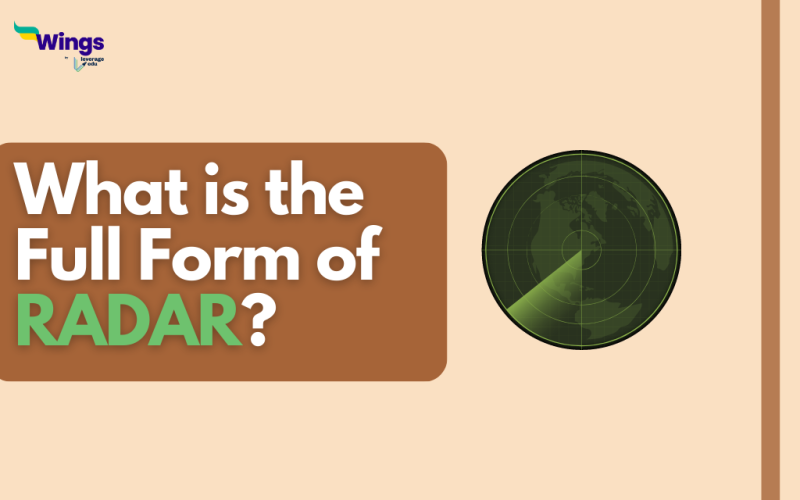The full form of RADAR is Radio Detection and Ranging. It is a detecting technology that radiates electromagnetic signals and analyses the reflected waves. Detection refers to the identification of the presence of a target object, which can be mobile or stationary. Ranging means the separation between the RADAR system and the target object. A Radio Detection and Ranging system can be used on land, in space, and at sea for different purposes like the detection of ships, planes, vehicles, unidentified flying objects (UFOs), weapon systems; tracking of satellites and spacecraft; and prediction of weather.
Working of RADAR
Table of Contents
The RADAR emits a targeted wave of microwave radiation towards the target object. When the wave hits the object, energetic ions bounce back toward the system with a significant piece of information about the target. A RADAR can measure the speed and size; detect the travel direction; and weigh the quantity of the target object, if placed within 100 miles of the target.
Types of RADAR
Radars are available in different shapes and sizes. Given below are some of the commonly used radars:
- Doppler RADAR
- Pulsed RADAR
- Bistatic RADAR
- Instrumentation RADAR
- Weather RADAR
- Monopulse RADAR
- Passive RADAR
Components of RADAR
A RADAR system comprises the below-listed components:
- Duplexer
- Transmitter
- Electrically Steered Phased Arrays, Rectangular Arrays, or Parabolic Mirror-shaped Antennas
- Waveguides
Applications of RADAR
Here are some of the key applications of a RADAR:
- To detect spacecraft and satellites
- To track spacecraft and satellites
- To control air traffic
- To keep highway traffic under control by measuring vehicle speed
Benefits of RADAR
Mentioned below are the advantages of a RADAR system:
- Signals from radars do not need a carrying medium.
- Radar signals can help in finding the accurate location of an object.
- Radars can give an estimate of the target speed.
- Radars provide accurate distance of an object from one point to another.
- Radars can determine the discrepancy between moving and stationary objects.
Also Read: How to Become a Space Scientist in ISRO?
This was all about the Full Form of RADAR. Visit our Full Form Page to discover more intriguing articles about full forms. You can also get a consolidated list of 300+ full forms here! Get in touch with the experts at Leverage Edu in order to kickstart your study abroad journey!
 One app for all your study abroad needs
One app for all your study abroad needs













